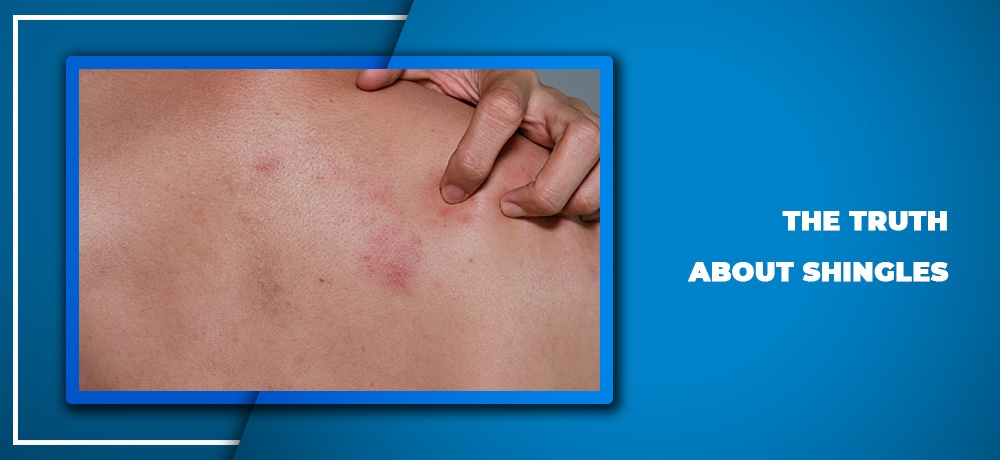The Truth About Shingles

Shingles is a viral infection that can affect many parts of the body. The virus, the herpes varicella-zoster virus, causes both shingles and chickenpox at different times in life.
In the past, most children contracted chicken pox at some time in their childhood. After you recover from the chicken pox, the virus hides dormant in specific nerve roots of the brain. If the virus is reactivated later in life, the virus results in shingles. Children these days receive the chicken pox vaccine, so chicken pox infections are now rare.
Shingles cause a painful vesicular skin rash on one side of the body, which is more painful and itchy than the chickenpox rash. The face, eyelids, scalp, tip of the nose, ears, back, and abdomen are all commonly affected.
In the early stages of shingles, before the rash begins, there is usually an early stage of feeling generally unwell, fever, chills, and pain, followed by a sensitivity to touch and a red rash that begins a few days after the pain. Fluid-filled blisters that break open and crust-over come next, along with intense itching. These blisters can take around five days to break open and up to four weeks to heal.
Pain can persist even after the rash is gone (this is called post-herpetic neuralgia). Approximately 20% of those affected by shingles experience post-herpetic neuralgia. Post-herpetic neuralgia describes pain that continues for months or even years after the initial blisters heal.
It isn’t known what exactly reactivates the virus. A reduction in one’s immunity seems to be the most likely cause. Things that can cause a decrease in your immunity include aging, UV exposure, stress, illness or organ transplantation.
How does shingles affect the eyes?
Shingles can affect the eyes. The symptoms of an ocular shingles infection can mimic those of many other eye conditions. The eye can be red, inflammed or feel irritated and vision may be blurry. It is imperative if you are experiencing these symptoms, or have been previously diagnosed with shingles on your face, that you visit your doctor of optometry. Ocular shingles causes corneal ulcers that could potentially lead to corneal scars and permanent vision loss.
The more severe and chronic the infection, the greater the risk of developing corneal scar tissue that can cause permanent vision loss. If your family physician suspects you suffer from shingles, it is imperative to seek the care of your local optometrist to rule out any eye involvement.
Treatments for shingles include pain relief and antiviral medication. Starting treatment as soon as possible reduces the risk of complications. Topical creams can help alleviate the discomfort from the skin rash. If the eye is affected, anti-inflammatory drops will be used. Treatment, however, does not kill the virus but instead forces the virus into dormancy again. Reactivation of shingles can occur at any time in the future.
It is also wise to remember that shingles are contagious only to people who have never had chickenpox. Additionally, a chickenpox vaccine in childhood or a shingles vaccine as an adult can minimize the risk of developing shingles.
As experienced optometrists in Wetaskiwin, Alberta, our eye care clinic offers a full range of eye health services to patients of all ages, from children to seniors. Our routine eye exams, vision tests, eye disease diagnosis and management, immediate attention for eye emergencies, and complete eye health management are top-notch. We provide eyewear prescriptions, eyeglasses, sunglasses, and contact lenses. We also offer eye surgery consultations and co-management with ophthalmologists.
To learn more about the services we offer, please click here. If you have questions or concerns related to Optometry, feel free to get in touch with us by clicking here.